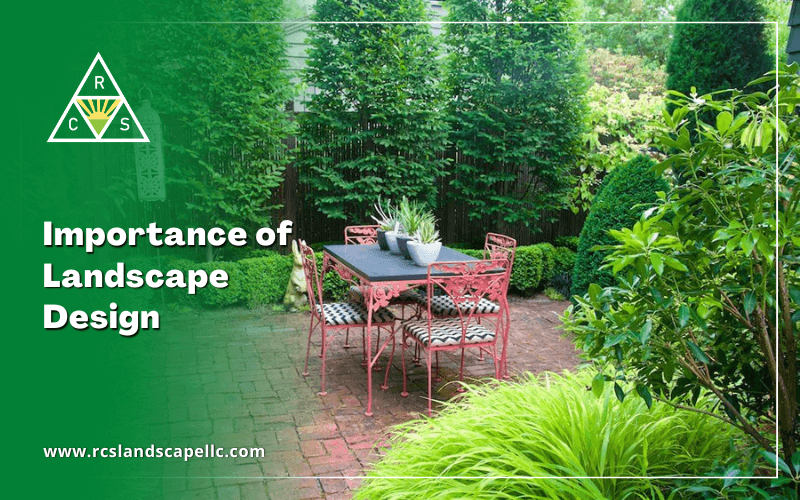The Ultimate Guide To Landscape Design
The Ultimate Guide To Landscape Design
Blog Article
An Unbiased View of Landscape Design
Table of ContentsLandscape Design for DummiesWhat Does Landscape Design Mean?The 7-Second Trick For Landscape DesignThe Ultimate Guide To Landscape DesignLandscape Design Things To Know Before You Get This
Formal style motif. Credit Report: Gail Hansen, UF/IFAS The backyard is an expansion of the home where a selection of activities occur. A yard can usually be divided right into 3 areas: public (the front yard), exclusive (the back backyard), and service (normally the side backyard). The place of activity areas depends primarily on the type of area, the dimension of area required, the sort of task, and the preferred proximity to various other activities and frameworks.The outside wall of your home typically functions as the initial wall surface or starting point of an outside area. Incompatible usages should be separated, and associated tasks, such as food preparation and eating, need to be put with each other to make the lawn much more effective and enjoyable. When using hardscape to develop spaces, utilize building material similar to that utilized in your house for continuity from the house right into the yard.
Linked rooms. Debt: Gail Hansen, UF/IFAS Utilizing comparable hardscape functions and duplicating plants draws the eye around the garden. Vital points along the road can be emphasized with plantings or functions that attract interest and motivate movement in a specific instructions. Moving along the course takes an individual from one location to the next and enables the user to have a range of experiences.
Rumored Buzz on Landscape Design

For psychological convenience plants are used as physical or implied obstacles for privacy and security. Physical obstacles obstruct both the sight and accessibility to an area and consist of fences, wall surfaces and plant bushes. Indicated barriers, usually low growing plants, block access yet not the view (Figure 9). Various other features of plants consist of cleansing the air, stopping erosion and dirt loss, maintaining wetness in the dirt, and returning raw material to the dirt.
Physical and suggested barriers. Credit Score: Gail Hansen, UF/IFAS For these factors, the kinds of plants to be used (such as trees, shrubs, or groundcovers) must be chosen in the early phases of preparation (Landscape Design). Plant kinds are chosen for their practical capabilities to make sure that their future objective and called for room can be taken into consideration at the very same time

The Ultimate Guide To Landscape Design
Each plant mass remains in front of, behind, or following to, an additional mass. Number 11. Straight plant layers. Credit Report: Gail Hansen, UF/IFAS Number 12. Vertical plant layers. Landscape Design. Credit Scores: Gail Hansen, UF/IFAS Repeating plants within a mass and duplicating masses with comparable plants connects the garden together. The private plant qualities should be considered to efficiently layer and mass plants.
All plant make-ups start with the main structure plants, the large, mostly evergreen background plants-such as the trees and big bushes. These plants different or enframe areas, regulate the dimension of the room, and give the beginning factor for choosing the suitable features of the second layer, midground plants, for massing and infill.
Crucial points in the garden should be highlighted by the use one-of-a-kind plants, distinctive frameworks, or garden ornaments. Noting limits or entryways to areas can be done with gates, arbors, and steps, or through using special and colorful plants. The type and/or style theme of the yard will frequently aid determine the important factors and just how they ought to be highlighted.
Various other important locations in the yard blog are focal factors, which is used to aesthetically organize a landscaped area. Different point of views or point of views can disclose various make-ups in the landscape that may require a selection of focal factors.
Landscape Design - Questions

Figure 13. Plant why not look here kinds. Credit Scores: Gail Hansen, UF/IFAS After form, appearance is the next dominant feature of a plant; crude, medium and great textures can be utilized for contrast and focus in the landscape. Form and appearance both trump color in the yard for the majority of the year. During certain periods, shade will be the most visible feature of the yard.
The enjoyable aroma of plants, the audio of wind in the trees, the noise and appearance of water, and the colors and structures of sculptures, pots and yard furnishings all include in the experience of the yard. One detail that is usually overlooked is the result of light on the visual appeals of the plants.

The Best Strategy To Use For Landscape Design
It is necessary to recognize the eventual fully grown dimension of plants so they can be positioned in the right area and spaced correctly when they are mounted. Offering plants room to expand is a challenge because the common fully grown dimension is typically based on optimum growing conditions and the environmental problems of a website may cause a plant to enlarge or remain smaller.
Report this page